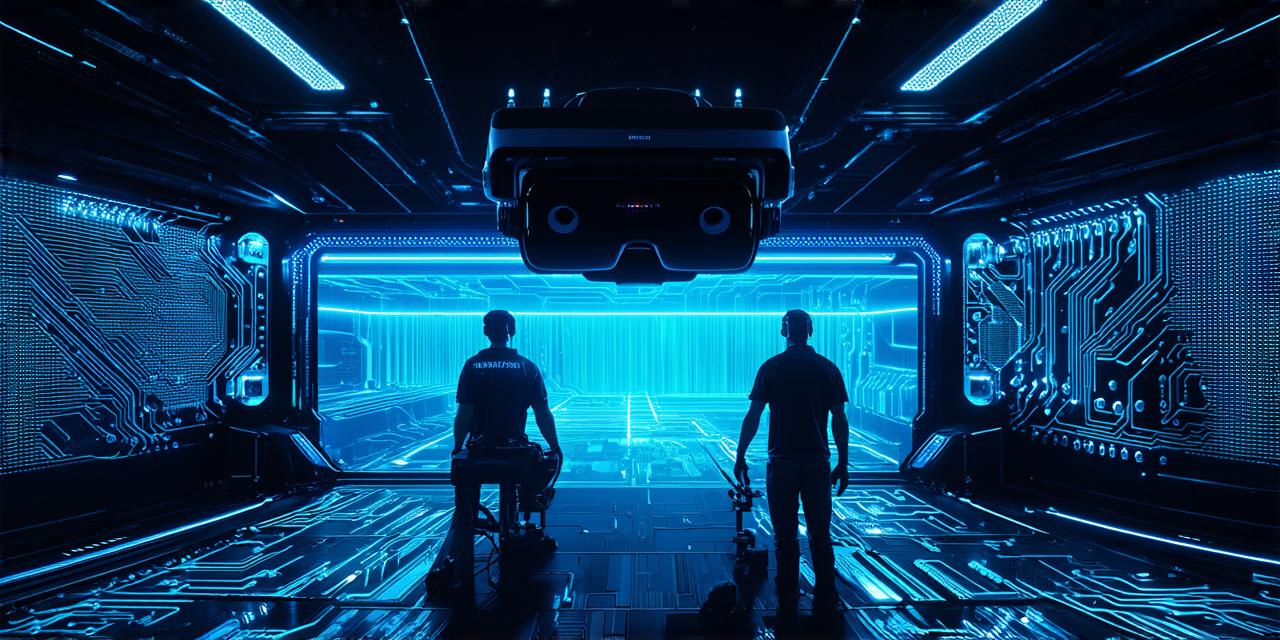What is Virtual Reality?
Virtual reality (VR) is a computer-generated simulation of a 3D environment that can be interacted with and explored by a user using specialized hardware such as headsets, gloves, or controllers. The goal of VR is to create an immersive experience that feels as if the user is physically present in the simulated environment.
Types of Virtual Reality
Virtual reality has been around for decades but only recently has it become mainstream due to advancements in technology and a growing demand for immersive experiences. There are several different types of virtual reality, including:
- Desktop VR: Desktop VR is designed for use on a computer using a headset and sensors that track the user’s movement. It is typically used for gaming or educational purposes and requires a powerful computer to run.
- Mobile VR: Mobile VR is designed for use on a smartphone or tablet using a specialized headset or glasses that can be attached to the device. It is often more affordable than desktop VR and offers a more portable experience.
- Standalone VR: Standalone VR is a self-contained system that does not require a separate computer or phone to operate. It is designed for use in public spaces or for training purposes and offers a more immersive experience than mobile VR.
- Wearable VR: Wearable VR is a type of VR that is integrated into clothing or other wearable devices such as smart glasses. It is often used for fitness or gaming purposes and offers a more convenient experience than traditional VR systems.
Examples of Virtual Reality in Action
Virtual reality has found applications in various fields, including:
- Gaming: Gaming is one of the most well-known applications of virtual reality. Many popular games have been adapted for VR, including first-person shooters, sports games, and adventure games. Virtual reality gaming offers a more immersive experience than traditional gaming and allows players to feel like they are part of the game world.
- Education: Virtual reality has also found applications in education. It can be used to create virtual field trips, simulations, and interactive learning experiences that allow students to explore complex concepts in a more engaging way. For example, medical students can use VR to simulate surgeries or biology students can use VR to explore the human body.
- Training: Virtual reality is also used for training purposes in fields such as aviation, military, and healthcare. It allows trainees to practice skills in a safe and controlled environment without the risk of injury or damage to equipment. For example, pilots can use VR to simulate flying scenarios and firefighters can use VR to practice rescue operations.
- Therapy: Virtual reality is also used for therapy purposes, particularly in the treatment of mental health disorders such as anxiety and PTSD. It allows patients to confront their fears and phobias in a controlled environment and has been shown to be effective in reducing symptoms.
- Architecture: Virtual reality is also used in architecture to create virtual models of buildings and design projects. It allows architects to visualize and test designs in a more realistic way than traditional methods and can save time and money in the long run.
- Tourism: Virtual reality is also used in tourism to offer virtual tours of famous landmarks and attractions. It allows tourists to explore these places in a more immersive way than traditional tours and has the potential to increase accessibility for people with disabilities or those who live far away from these locations.
Technical Aspects of Virtual Reality Development
Virtual reality development involves several technical aspects, including:
- Hardware: The hardware required for VR development includes specialized sensors, cameras, and displays that track the user’s movement and create the 3D environment. There are several different types of VR hardware available, including headsets, controllers, gloves, and tracking systems.
